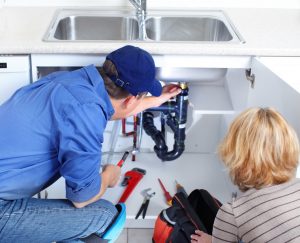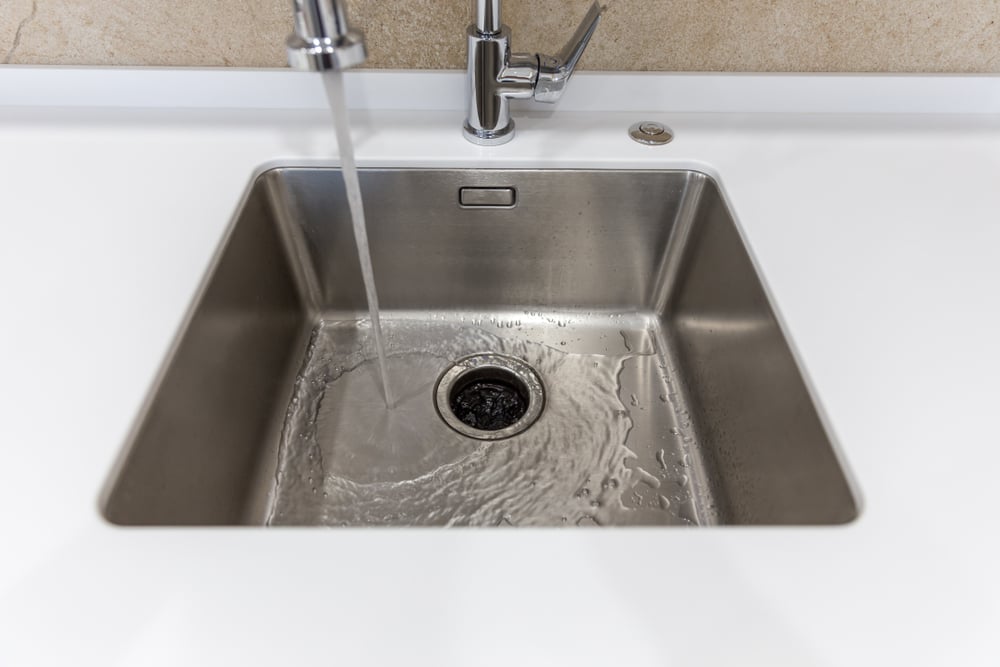Your Comprehensive Guide to Fixing a Leaky Garbage Disposal
Your Comprehensive Guide to Fixing a Leaky Garbage Disposal
Blog Article
The publisher is making a few good pointers related to Why Is My Garbage Disposal Leaking From the Bottom? in general in this article further down.

Garbage disposals are crucial cooking area appliances that aid in throwing away food waste successfully. Nevertheless, a dripping garbage disposal can be an aggravating and untidy issue to handle. Thankfully, numerous leaks can be dealt with conveniently with a couple of straightforward actions. In this short article, we will certainly talk about how to take care of a leaking waste disposal unit properly.
Introduction
Garbage disposals are mounted under kitchen sinks and are made to shred food waste right into smaller sized pieces, allowing it to travel through the pipes system conveniently. While these devices are typically reliable, leaks can occur in time because of wear and tear, loose connections, or damage to the system.
Common Sources Of Leakages in Waste Disposals
Worn Seals and Gaskets
Seals and gaskets play a crucial function in protecting against water from dripping out of the waste disposal unit. Gradually, these elements can deteriorate, bring about leaks around the disposal unit.
Loose Links
The connections between the garbage disposal and the plumbing system can come to be loose with time, triggering water to leak out throughout operation.
Cracks or Openings in the Disposal Unit
Physical damages to the waste disposal unit, such as fractures or openings in the real estate, can also cause leakages.
Determining the Source of the Leakage
Prior to attempting to take care of a leaking waste disposal unit, it is essential to recognize the source of the leak. This can generally be done through aesthetic assessment or by conducting straightforward examinations.
Visual Evaluation
Evaluate the waste disposal unit unit carefully for any kind of signs of water leak. Pay close attention to locations around seals, gaskets, and connection points.
Examining for Leaks
One way to check for leakages is by running water through the disposal system and looking for any visible indicators of leak.
Tools and Products Needed for Dealing With a Leaking Garbage Disposal
Before starting the repair process, collect the essential devices and products, consisting of a screwdriver, flexible wrench, plumbing professional's putty, substitute seals or gaskets, and epoxy or patching product for repairing cracks or openings.
Step-by-Step Guide to Repairing a Leaking Garbage Disposal
Switch off the Power
Prior to attempting any type of repair work, make sure that the power to the garbage disposal unit is switched off to stop the threat of electric shock.
Find the Leakage
Determine the exact place of the leakage and figure out the cause.
Tighten up Links
Make use of a wrench to tighten any type of loose connections between the disposal system and the pipes system.
Replace Seals or Gaskets
If the leak is due to used seals or gaskets, eliminate the old elements and replace them with brand-new ones.
Patching Cracks or Openings
For cracks or holes in the disposal system, usage epoxy or an appropriate patching product to secure the broken location.
Examining the Waste Disposal Unit After Repair Work
When the fixing is full, test the waste disposal unit by running water via it to ensure that the leakage has actually been settled.
Preventive Upkeep Tips to Avoid Future Leakages
To stop future leaks, it is essential to execute normal maintenance on your garbage disposal. This consists of maintaining it clean, staying clear of placing non-food items or difficult objects down the disposal, and occasionally checking for leakages or other issues.
Final thought
In conclusion, fixing a dripping garbage disposal is a relatively simple process that can be completed with fundamental devices and products. By complying with the actions detailed in this write-up and practicing preventative upkeep, you can keep your garbage disposal in good working condition and avoid expensive repair work in the future.
HERE’S HOW TO FIX YOUR GARBAGE DISPOSAL
WHAT TO DO IF SOMETHING IS STUCK IN YOUR GARBAGE DISPOSAL
If the impeller won’t turn, there’s probably something stuck in the disposal. It could be a steak bone or peach pit, although plumbers report pulling all sorts of inappropriate objects out of disposals, such as bottle caps or aluminum foil. Make sure power to the disposal is off, and look inside to see if you can see the source of the jam.
Never stick your fingers in a disposal. Pull out anything you see with tongs or pliers.
If the disposal still won’t work, it may be time to call a plumber or consider buying a new disposal. GEM Plumbing & Heating is here for all of your garbage disposal needs.
WHAT TO DO IF YOUR GARBAGE DISPOSAL DRAIN IS CLOGGED
Take everything out from underneath your sink and put a bucket or other container under your disposal to catch any water that drains out. Disconnect your disposal from the power supply. If it’s plugged into a wall outlet, unplug it. If it’s hardwired into an electrical box, go to the electrical panel and turn off the breaker for the disposal. Pour ¼ cup of baking soda into the drain, followed by ½ cup of white vinegar. Give the solution a few minutes to fizz and do its work. Look into the disposal with a flashlight to see if you can see an object that might be causing the clog. If you see it, remove it using tongs or pliers. MORE TIPS ON DEALING WITH A CLOGGED GARBAGE DISPOSAL
Never use drain cleaner in a garbage disposal. It can damage the plastic parts inside the disposal. You can also be splashed with the caustic liquid while working to clear the clog. Beware! Never stick your fingers into a garbage disposal. Trust us — not a good idea. In many instances, your dishwasher drains through your garbage disposal. This allows the disposal to grind any large food particles that may be drained out of your dishwasher. There are some jurisdictions, however, where the plumbing code prohibits such a connection. WHAT TO DO WHEN YOUR DISHWASHER DRAINS THROUGH THE DISPOSAL
Run some water in the sink so your plunger has at least a ½-inch of water to create a seal and plunge vigorously up and down several times. You may need to repeat this several times. Run hot water down the drain to clear any residue that remains.

We had been made aware of that write-up about How to fix a pretty consistent leak from my garbage disposal from an acquaintance on our other web page. Remember to take a moment to distribute this entry if you enjoyed it. Thank-you for your time invested reading it.
Call Today Report this page